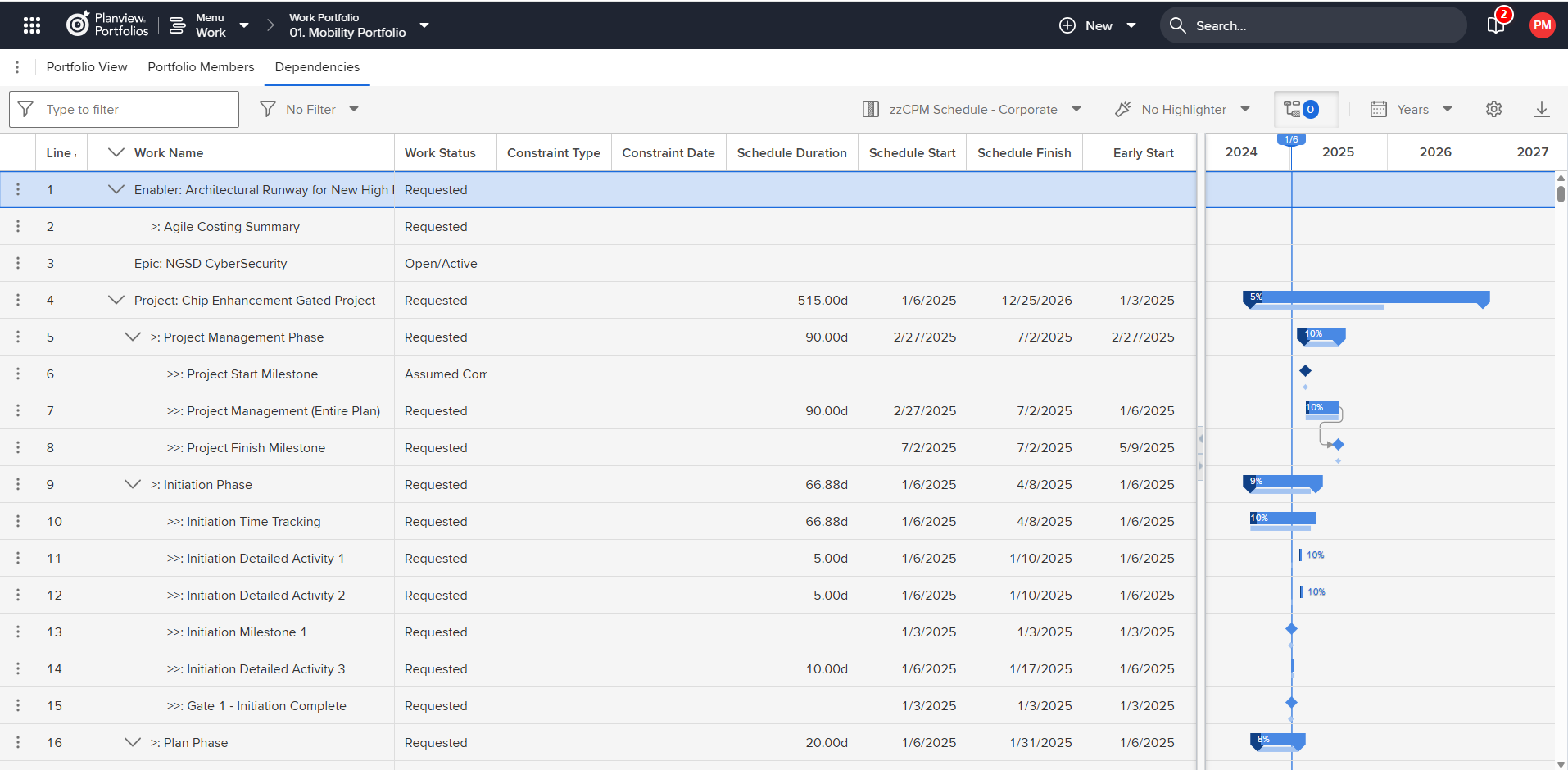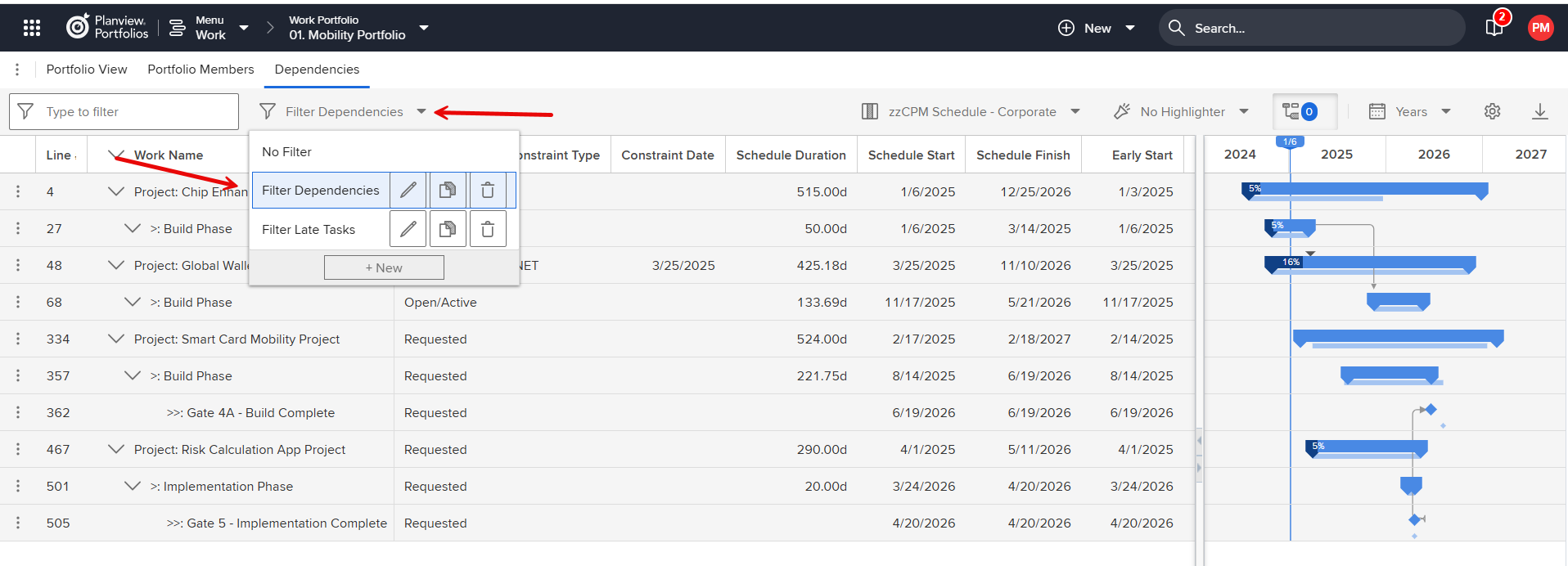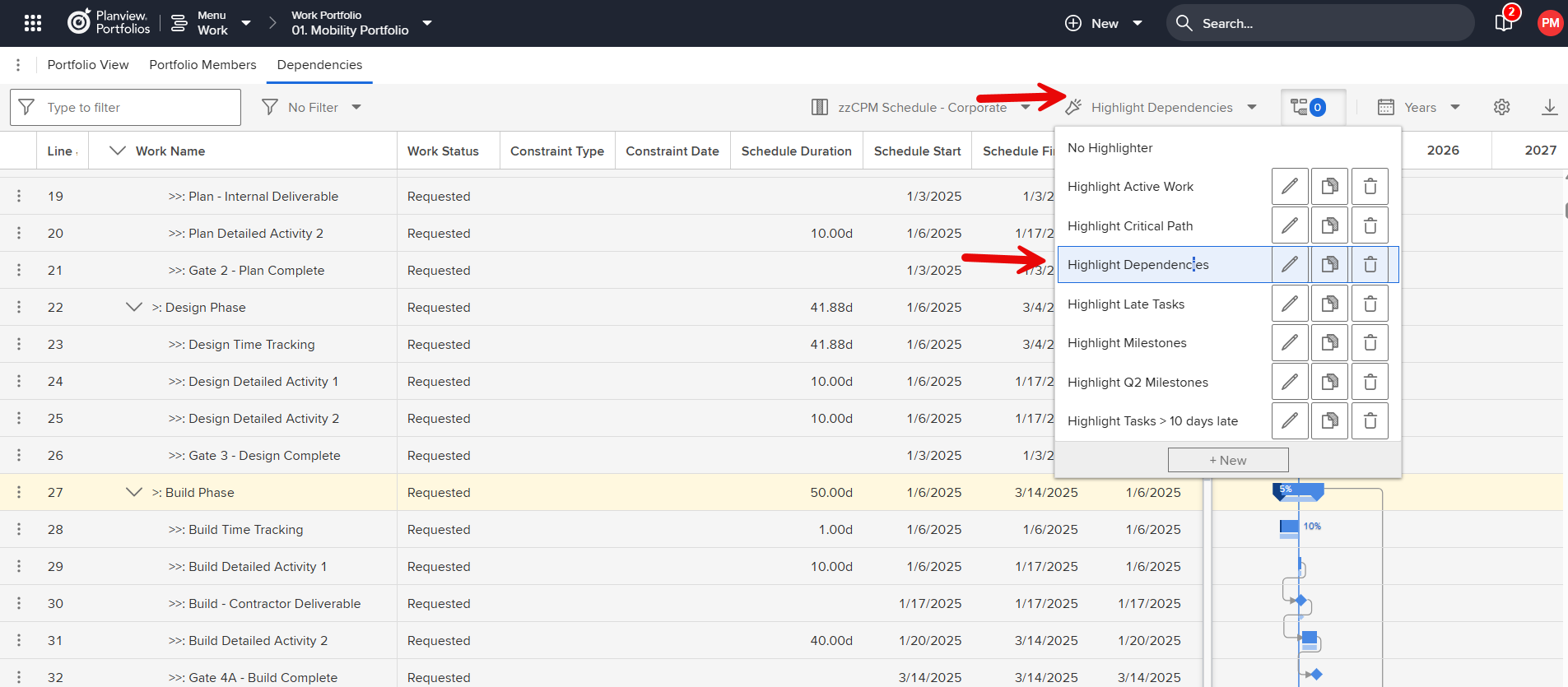We’re starting to look again at managing dependencies using successor/predecessor relationships across projects/work items. In the past we’ve avoided this due to the risk that a single change from a predecessor project could have a ripple effect across the entire portfolio, impacting everyone’s plans with no control or obvious ‘root’ cause. However I’ve recently been led to believe that there are global parameters which can be set to restrict this ability to reprofile downstream plans as a result of a planning violation without a direct confirmation from the owning Plans PM if dependencies fall out of line, instead some kind of warning or notification is launched. Has anyone used, this? If so I’d be keen to see some support material & any downside impacts that such a constraint may have on, for example, progressing engine processes, wider plan scheduling or CPM
Planview Customer Community
Already have an account? Login
Planview Customer Community
No account yet? Create an account
Login with SSO
Login with Planview Adminor
Enter your E-mail address. We'll send you an e-mail with instructions to reset your password.






